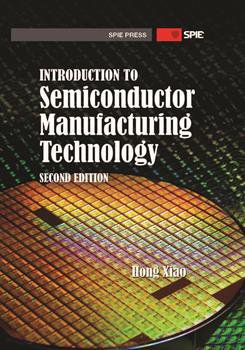|
This chapter provides the basics of a semiconductor, semiconductor devices, and semiconductor processes. Objectives After finishing this chapter, the reader will be able to:
3.1 What Is a Semiconductor? Semiconductors are materials with electrical conductivity between good conductors such as metal (including copper, aluminum, tungsten, etc.) and good insulators such as rubber, plastic, and dry wood. The most commonly used semiconductor materials are silicon (Si) and germanium (Ge), both of which are located in column IVA of the periodic table of elements, shown in Fig. 3.1. Some compounds such as gallium arsenate (GaAs), silicon carbide (SiC), and silicon germanium (SiGe) are also semiconductor materials. One of the most important properties of a semiconductor is that its conductivity can be controlled by intentionally adding certain impurities, a process called doping, and by applying an electric field. 3.1.1 Bandgap The fundamental difference between a semiconductor and an insulator or a conductor is the bandgap. Atoms form all materials, and every atom has its own orbital structure [see Fig. 3.2(a)]. Electron orbits of the atom are called shells because electrons orbit around the nucleus in a 3D shell. Thus, the orbits in Fig. 3.2(a) can be seen as the cross section of these shells. The outermost shell is called a valence shell. Electrons in a valence shell cannot conduct an electric current. When an electron escapes the constriction of the nucleus and leaves the valence shell, it becomes a free electron and can conduct an electric current. |
|
|


